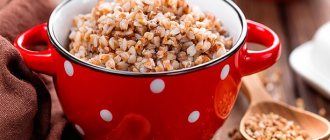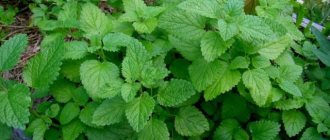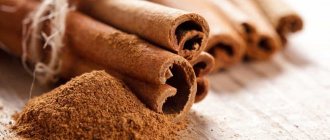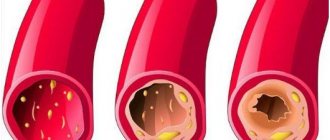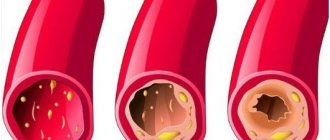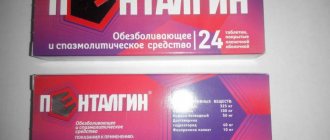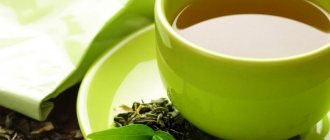How mint and blood pressure interact with each other is one of the most pressing issues that worries hypertensive patients.
By carefully familiarizing yourself with the composition of this plant and the characteristics of the effects of its components on the body, you can determine whether peppermint increases or decreases blood pressure.
You also need to know about all the methods and rules for using this plant for arterial hypertension.
Contraindications
Before starting to use mint in order to normalize blood pressure, you need to make sure that there are no individual contraindications.
The use of any form of this plant in certain situations is unacceptable, including:
- severe allergic reactions to menthol;
- hypersensitivity to plant components;
- frequent heartburn;
- severe kidney disease;
- liver failure;
- increased fatigue and drowsiness;
- children under three years of age;
- severe pathological hypotension;
- reproductive age in men;
- pregnancy and breastfeeding in women;
- bradycardia;
- bronchial asthma;
- history of varicose veins.
Contraindications for use
IT IS IMPORTANT TO KNOW!
In 90-95% of people, high blood pressure develops regardless of lifestyle, being a risk factor for diseases of the brain, kidneys, heart, vision, AS WELL AS HEART ATTACKS AND STROKES! In 2020, scientists discovered a relationship between the mechanisms of increasing blood pressure and blood clotting factor. Read more "
Although mint, like other medicinal herbs and plants, has some positive results, it also has contraindications. After taking it, the blood vessels dilate, therefore, blood pressure drops, so hypotensive patients should not drink it.
Many people believe that tea from this plant helps with headaches, and this is true only if the pain is not due to spasm of cerebral vessels.
If you constantly want to sleep, it is not recommended to take mint teas, because they have a calming, tonic effect. On the contrary, it is recommended to drink it for sound sleep. Doctors do not recommend using it before driving a car.
Mint affects people's bodies in different ways: it helps some, but harms others. It is forbidden to take it if you are intolerant to menthol. You should not give medications that contain menthol to children under three years of age, as well as during pregnancy and breastfeeding. If the baby has a bad, weak sleep, then you can place a container of water at his head and add a few drops of mint essential oil, because it contains a large number of useful microelements and vitamins.
Medicines based on the plant are prohibited for varicose veins, liver and kidney diseases.
Beneficial properties of peppermint
The healing properties of mint are due to its unique composition. The main component is menthol, which promotes a gentle dilation of blood vessels, as a result of which high blood pressure levels begin to decrease.
This substance is contained in all parts of the plant in different quantities:
- 6% - inflorescences;
- 2.8% - leaves;
- 0.4% - stems.
It is thanks to menthol oil that mint effectively helps not only with blood pressure, but also with numerous colds and inflammatory diseases.
Mint also contains:
- microelements that actively nourish and strengthen blood vessels, cleanse the blood;
- tannins, which strengthen blood vessels and give them elasticity;
- flavonoids, which have pronounced antioxidant and antispasmodic properties (strengthen blood vessels and regulate their permeability);
- organic acids that gently dilate blood vessels and prevent the formation of blood clots due to the complete breakdown of fatty plaques accumulating on the venous walls.
As a result of its use, the following positive changes occur:
- attacks of nausea are eliminated;
- pain subsides;
- the blood circulation process is activated;
- gently but effectively reduces blood pressure;
- the emotional state is normalized.
Mint and blood pressure
To get an answer to this question, you should find out what exactly are the beneficial properties of the plant, what substances have a beneficial effect.
It is known that with hypertension, blood vessels become extremely thin and lose elasticity. Regular consumption of mint helps prevent these phenomena. The plant helps cleanse the body of cholesterol and reduces the likelihood of hematomas.
The presence of flavonoids in the plant makes it possible to use mint for hypertension. With their help, blood vessels are strengthened, their fragility and fragility are reduced.
Rich in microelements, aromatic mint improves immunity and speeds up metabolism. Tanning elements in the composition help stop bleeding and have a pronounced anti-inflammatory effect.
Don't tolerate high blood pressure
Now hypertension can be cured by restoring blood vessels...
>
How does mint affect
Before using this plant for preventive or therapeutic purposes, you need to find out how peppermint affects blood pressure, the nervous system and the heart.
People experiencing changes in blood pressure are interested in how mint works for hypertension, and whether it can be taken if the pressure is low.
We need to figure out how much mint reduces blood pressure, and whether it could be dangerous to health.
On pressure
The question of whether peppermint increases or decreases blood pressure is relevant for absolutely everyone; This is especially important for those who have problems with blood pressure.
It is important for both hypertensive and hypotensive patients to get a clear answer to the question, since their health depends on this.
Decoctions and infusions, as well as various medications based on peppermint, are often prescribed for high blood pressure. The active components of this plant promote vasodilation, due to which blood pressure levels gradually decrease.
At the same time, mint eliminates associated headaches. People who suffer from pathologically low blood pressure should avoid taking any menthol-containing medications.
By the way, coffee can also raise or lower blood pressure!
On the heart
Mint is characterized by pronounced cardiological properties (due to the high concentration of menthol). The use of this medicinal plant provokes reflex irritation of small and large blood vessels, including coronary ones.
The positive effect on the cardiovascular system consists of such manifestations as:
- normalization of blood circulation;
- easy expansion of arteries and veins, as well as their strengthening;
- simultaneous decrease in renal and blood pressure;
- quick and effective elimination of heart pain caused by chronic diseases or temporary neuroses;
- effective healing of damaged tissues (including myocardial tissue) due to the acceleration of natural metabolic processes;
- replenishment of bioactive and nutrient reserves that are necessary for the proper functioning of the heart and all blood vessels;
- active saturation of tissues with molecular oxygen.
Preparations, the main component of which is mint, are mainly indicated for angina pectoris, which can develop as a result of acute experiences, sudden stressful situations or excessive emotional excitability.
An aromatic and tonic mint decoction for heart pain has a calming and relaxing effect, and also completely eliminates restless and anxious feelings.
As a result, the frequency of myocardial contractions and the intensity of pain will significantly decrease.
The effect of mint on blood pressure
People diagnosed with hypertension and hypotension are interested in one question: how does mint affect blood pressure? Those who are interested in this should remember that menthol, which is found most often in mint, is included in such drugs as validol and valocordin. These are vasodilators that improve cardiac activity and relieve vasospasm.
From the above it is clear that menthol is considered the main component, and it has a vasodilating, tonic, relaxing effect, therefore, blood pressure decreases. Therefore, hypotensive patients are not advised to overuse medications that contain this herb. For hypertension, on the contrary, it is necessary to take medications and teas that contain mint.
Mint reduces high blood pressure; decoctions, infusions, and teas are prepared from it. It is not recommended to use drugs containing this plant, as well as infusions, for young children.
Mint for hypertension
In order not to harm your own health, it is important to know exactly whether mint increases or decreases blood pressure.
For arterial hypertension, this medicinal herb has a number of positive properties:
- significantly improves blood flow;
- normalizes heart rhythm;
- stimulates digestion processes and the production of gastric juice;
- acts as a choleretic agent;
- normalizes intestinal microflora;
- eliminates migraines and nausea;
- relieves colds and inflammatory processes affecting the respiratory tract.
Treatment of high blood pressure involves the use of several forms of this plant - fresh raw leaves, herbal teas and decoctions, infusions, as well as essential oil.
Raw mint leaves have a mild effect, so they are recommended for use with a slight increase in blood pressure.
A few pieces can be added to any dish - this will reduce blood pressure by approximately 5 mmHg.
If high blood pressure persists for a long period, you should chew 2-3 fresh leaves daily. This helps normalize the condition.
Warm mint teas not only reduce blood pressure, but also have a sedative effect. In case of severe hypertension, you are allowed to drink them 3-5 times a day, not forgetting to periodically measure your blood pressure level.
Decoctions and infusions have a similar effect, but more pronounced due to the high concentration of mint extracts.
Mint for hypotension
The use of peppermint for high blood pressure helps to achieve good therapeutic results. But it is equally important to know whether this plant can be used for hypotension.
How does mint act in this case - does it increase or decrease blood pressure?
Hypotension is an adverse health condition in which blood pressure levels fall below normal.
Among the main symptoms of hypotension are:
- severe drowsiness even after sufficient sleep;
- dizziness;
- loss of strength for no apparent reason;
- decreased sex drive;
- disruption of the body's natural thermoregulation;
- cold extremities;
- blood pressure level is 90/60 or lower.
Since mint lowers blood pressure, if you have hypotension, you should not abuse medications based on it. If you need to normalize your psycho-emotional state, it is only permissible to drink one cup of mint tea occasionally.
Other effective natural medicines will help eliminate the symptoms of hypotension and normalize blood pressure - lemon, sea buckthorn, currants, sorrel, garlic, onions, cabbage, carrots, pomegranate juice and rosehip decoction.
Ways to normalize blood pressure with mint
For those who are interested in whether mint lowers or increases blood pressure, it is important to know about all the ways that can normalize it.
For these purposes, herbal teas are widely used, prepared not only from mint alone, but also with the addition of additional medicinal herbs.
Decoctions, infusions and essential oil of this plant are also effective. Each of the methods is worth considering in more detail.
Mint tea
Peppermint tea is one of the simplest and most affordable antihypertensive remedies; anyone can easily prepare it on their own.
It is especially recommended to consume this tonic and soothing drink during the hot season.
The classic recipe allows for the use of both fresh and dried aromatic mint leaves.
To prepare tea you need:
- place 1 teaspoon of dried raw materials (or 2-3 fresh leaves) in a glass or enamel container;
- pour the contents with a glass of boiling water;
- leave for 10 minutes.
This drink made from mint leaves should be drunk twice a day. The optimal duration of the therapeutic course is two weeks. The combination of mint with green tea and a small slice of lemon has a beneficial effect on blood pressure.
This refreshing elixir is recommended to be consumed chilled in hot weather. It is important to remember that mint tea lowers, not increases, blood pressure.
That is why people prone to hypotension should not consume it in large quantities.
Infusion with mint and chamomile
Chamomile is an equally useful and effective medicinal herb. It goes perfectly with mint and helps normalize blood pressure.
It has virtually no contraindications (with the exception of allergic reactions, the presence of stones in the bladder and kidneys, as well as pregnancy).
Mint-chamomile infusion has other positive properties:
- antispasmodic, antibacterial and anti-inflammatory effect;
- elimination of manifestations of colds;
- normalization of gastrointestinal tract functions;
- neutralization of pathogenic microflora;
- normalization of sleep and elimination of stress.
The infusion is prepared according to the simplest recipe. To do this you need to take:
- 1 tsp mint herbs;
- 1 tsp chamomile flowers;
- 1 glass of water.
Pour a glass of boiling water over the herbal ingredients, cover with a lid and leave for about 15 minutes. Then filter and drink warm twice a day. The infusion goes perfectly with honey.
Essential oil
Peppermint essential oil can be used in aromatherapy and massage.
In the first case, a few drops of it are added to the aroma lamp and the mint vapor is deeply inhaled. Certain rules must be followed.
You need to fill the lamp with 2/3 of warm water. The optimal dosage of essential oil is 1-2 drops for every 5 square meters of room. In case of overdose, fatigue and severe headache may occur.
When performing a massage with the oil of this plant, you should rub the area of the temples, forehead and back of the neck with light movements. A significant improvement in the condition is expected after 2-3 days.
Another effective way to use peppermint oil for high blood pressure is to add a few drops of it to a warm water bath. Thus, the hypotensive effect will double.
The effect of mint oil on high blood pressure is very beneficial. In addition to the options discussed, a compress for the back of the head is a very effective remedy for hypertension.
To do this, you need to prepare an aqueous solution of sea salt with the addition of a few drops of oil, and then soak gauze in it and apply it to the back of your head.
In order to normalize the condition, it is recommended to carry out such procedures daily for 28 days, then take a week break.
There are other types of essential oils that, like peppermint oil, have a beneficial effect on blood pressure. They are obtained from the following plants:
- geraniums;
- ylang-ylang;
- lavender;
- marjoram.
Combination with pharmaceutical tinctures
To enhance the hypotensive effect, you can mix alcoholic tincture of mint with some other tinctures available in every pharmacy. In this case, it is extremely important to maintain the optimal proportions of the components - 1:4.
Mint can reduce discomfort and lower blood pressure in combination with the following tinctures:
- Hawthorn. This option is characterized by a mild sedative effect. It also eliminates insomnia and increases heart rate.
- Motherwort. The resulting combined remedy easily copes with emotional excitability, has a general calming effect and normalizes the activity of the cardiovascular system.
- Peony. It not only effectively reduces blood pressure, but also helps get rid of the obsessive feeling of fear.
These combined tinctures must be used strictly according to the following rules:
- Dilute 10 drops of the drug with a small amount of drinking water;
- take 20 minutes before meals 3 times a day;
- The average course of treatment is 2-3 weeks (depending on the condition).
Combination with other herbs
You can enhance the hypotensive properties of mint by adding other medicinal herbs and plants to it. Mint has a beneficial effect with the following plants:
- Melissa. The herbs should be mixed in equal parts (one teaspoon at a time), add cold water and simmer for 15 minutes over low heat. Cool and strain.
- Adonis, astragalus and oregano. Mix crushed plant materials in equal quantities. Pour one tablespoon of the mixture into a half-liter container of boiling water and leave for half an hour. Drink 10 ml of infusion daily before each meal.
- Motherwort and hawthorn. Mix one teaspoon of each plant. Pour boiling water over and leave for 30 minutes. Then strain and drink half a glass before eating.
- Raspberries. In one container you need to steam a tablespoon of berries and a teaspoon of herbs (mint). Boil for 10 minutes, then leave for 20 minutes.
- Black currant leaves. Pour boiling water over the ingredients in equal proportions and leave for 30 minutes. Take three times a day before meals.
Homemade tincture
You can prepare a tincture based on mint to normalize blood pressure. The recipe is quite simple:
- Carefully chop 80-100 grams of fresh mint. Add 2 tbsp. Sahara.
- Let sit for 30-40 minutes (during this period the sugar will be well saturated with the grass juice).
- Pour the mixture with medical alcohol or high-quality vodka in an amount of 500 ml.
- Close the container tightly and leave for 2 weeks in a dark place.
Throughout this time, shake the container periodically. When the tincture is ready, take 15-20 drops, dissolving in a small amount of water.
Decoction
To prepare homemade mint infusion, you need 2 handfuls of fresh or 2 tablespoons of dry mint leaves, as well as 1 liter of boiling water.
After waiting for it to boil, keep the broth on the fire for 10 minutes, then cool naturally and strain using a strainer or gauze.
It is recommended to use this product 2-3 times a day, 1 cup.
Tips for using the plant
Hypertensive patients can simply chew the pure leaves of the herb or drink it as tea. The drinks are prepared very simply: you can brew only the leaves and flowers of the plant, or you can add them to your favorite tea. The hypotensive effect persists regardless of the temperature of the drink.
The healing herb works great in tandem with honey, chamomile, and hawthorn. A honey or chamomile drink with mint will relax and reduce blood pressure. Peppermint oil is often used during general or acupressure sessions to relieve hypertension.
If a patient with hypertension has no contraindications to the use of aromatic herbs, then he can safely enjoy mint drinks. If you use the plant along with prescribed medications for hypertension, you should definitely consult your doctor about this.
Contraindications
When using mint to normalize pressure in the arteries, it is important to remember that, like any herbal medicine, it has contraindications and side effects.
To avoid negative effects on the body, this remedy should not be used for a number of diseases, which include:
- chronic hypotension in severe form;
- bronchial asthma;
- spasmophilia;
- severe ulcerative lesions of the liver and gastrointestinal tract.
An overdose or non-compliance with the rules for taking mint preparations leads to the following side effects:
- sleep disorders;
- excessive emotional overstimulation;
- rash, itching, redness, swelling of the skin and other allergic manifestations.
If any of the above symptoms occur, you should stop taking it and immediately consult a doctor.
Results and conclusions
Peppermint is successfully used in the treatment of many diseases of the cardiovascular and nervous system, as well as the gastrointestinal tract. It has an analgesic, tonic and antiseptic effect.
In addition, this plant helps normalize blood pressure.
Teas, decoctions and infusions of mint are effective for hypertension, but, on the contrary, they can harm hypotensive people, as they lower blood pressure even more.
In any case, it is necessary to take into account possible contraindications and side effects, and also follow the rules for using this plant.
